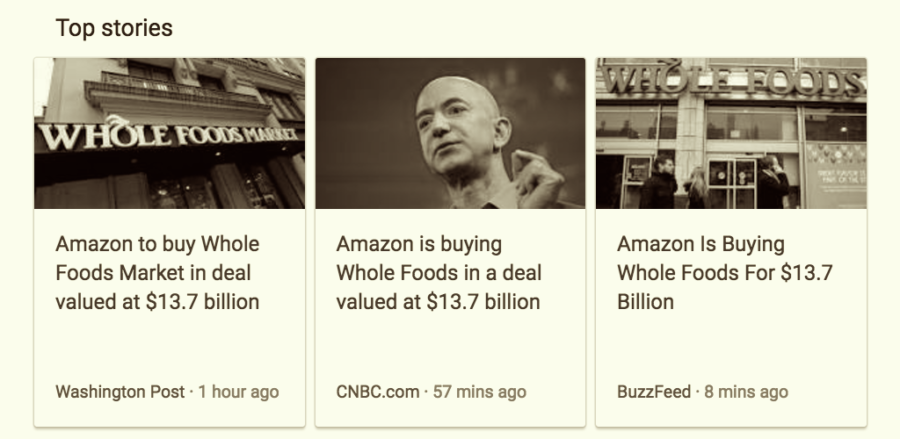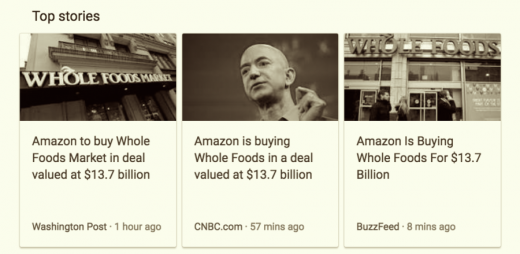Amazon Acquires Whole Foods: A Big Win for Unified Commerce
— June 16, 2017

On June 16, 2017, Amazon announced its intent to acquire Whole Foods Markets. The acquisition is valued at approximately $ 13.7 billion and has several important implications for the broader marketplace.
One More Step in Amazon’s (Unstoppable?) Rise
It’s important to remember that this isn’t Amazon’s first entry into the brick-and-mortar world. Over the past few years, Amazon opened several stores across the US, expanding its footprint from the digital realm to the physical.
These stores aside, Amazon’s approach, which led it to become the most successful e-commerce firm out there, have had a huge impact both on- and off-line. Providing buyers with user reviews on a massive scale, for example, helped transform digital shopping habits. And Amazon’s use of automation and robots in warehouses has been a cutting-edge method for cost control.
By contrast, traditional brick-and-mortar stores have experienced nothing but rising rents and increased labor costs, at a time when foot traffic has steadily decreased. As a result, while retailers such as Sears, Macy’s, and Aeropostale have steadily announced store closures, Amazon continues adding warehouses to support its expansion.
What Amazon Gets from the Deal
Amazon’s acquisition of Whole Foods provides the company with the ability to expand its distribution network. Whole Foods Markets are typically located in middle-to-upper income neighborhoods. A successful integration of both firms’ logistical activities will mean that Amazon can reduce delivery times to neighborhoods where customers are more likely to spend more.
The acquisition also benefits Amazon by allowing Whole Foods customers to purchase products online through Amazon.com. First and foremost, this should help the firm expand its AmazonPrime subscriber base. In addition to driving valuable subscription revenue, this would also give Amazon an opportunity to do one of the things it does best: target shoppers with personalized product recommendations, helping increase overall customer spend.
Finally, while Whole Foods, too, has an e-commerce site, many consumers still visit stores for grocery purchases. Accordingly, this acquisition can help bring the Amazon Go concept to the masses.
Amazon Go, for those who don’t know, allows consumers using the Go app to enter an Amazon Go store, pick items they want, and leave without having to pay through a traditional check-out counter. Instead, the company automatically takes payment thanks to the payment information stored in the user profile.
The Go concept, introduced across Whole Foods Markets, could help the company improve in-store shopping experience for millions. It would also help the company decrease labor costs by eliminating or reducing the number of traditional checkout counters.
The Advent of “Unified Commerce”
In the end, this acquisition is a perfect illustration of the rising impact of “unified commerce.”
Unified commerce refers to retailers bridging the gap between the in-store realm and the digital (web, mobile application and mobile web) realm. The result is a seamless experience across customer touch-points, as well as the ability to personalize customer interactions wherever they might take place.
If Amazon successfully capitalizes on the opportunities presented by this acquisition, it will likely set the standard for best practices in the grocery industry over the next several years. Companies across a wide range of industries – from e-commerce firms such as Alibaba and eBay to grocery chains such as Wal-Mart, Albertsons and Aldi – will be watching to see where they can effectively compete, and where they will have to catch up.
Digital & Social Articles on Business 2 Community
(50)













